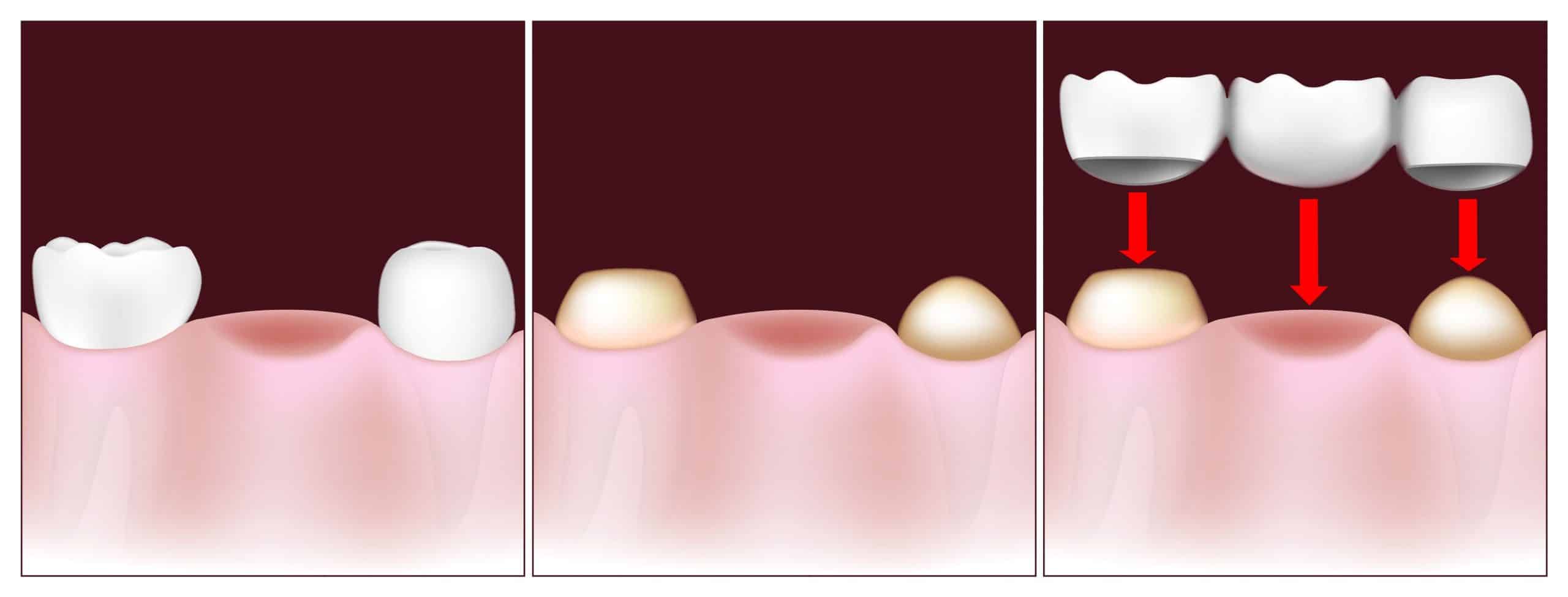A Dental Bridge Can Restore Your Smile’s Function and Appearance
A dental bridge is an ideal restoration for one to two missing teeth, as it can easily close the gap to provide you with better functionality and an improved appearance. Dr. E. Richard Hughes can fill gaps left from missing or severely damaged teeth with a fully customized dental bridge from our Sterling, VA, dental practice. There are multiple restoration options for you to choose from and the right choice will depend on your individual situation. Our office can meet the needs of all of our patients with both traditional and implant-supported dental bridges.

About Dental Bridges
A dental bridge can fill the gaps in your smile where missing teeth have left spaces. Dental bridges are made of multiple crowns fused together and can replace one to two missing teeth. In some cases, you can replace up to three consecutively missing teeth with a dental bridge. Traditional restorations use nearby teeth for support. The crowns on each end of your bridge will attach to the two surrounding teeth and secure the bridge in place. Implant-supported bridges are attached to one or more dental implants.
There are several different materials available for dental bridges, including metal. Tooth-colored options, such as porcelain or zirconia, are much more popular, as they can blend in with your smile for a seamless and natural look. These tooth-colored options not only resemble natural teeth, but they also mimic the strength and durability of natural teeth.
Dental Bridge Candidates
Patients who are missing a single tooth or two consecutive teeth are ideal candidates for a dental bridge. If you are missing a larger number of teeth, you will likely benefit from another restorative solution, such as a partial denture. For a traditional bridge, the two adjacent teeth must be healthy enough to support the crowns of the bridge. Good periodontal health is also important, and if you suffer from gum disease, you may require appropriate treatment before your restoration can be placed. In addition, patients who prefer an implant-supported bridge must have sufficient jawbone density to support the implants. If you have suffered from bone loss, you may require preparatory procedures to restore your treatment candidacy. For those patients with a severely compromised smile, we can integrate this procedure into a comprehensive full mouth reconstruction, addressing all areas of concern.
Placement of Dental Bridges
Together with Dr. Hughes, you will choose the type of bridge you wish to have placed as well as the material of the bridge itself. If you choose a traditional bridge, Dr. Hughes will begin by reshaping the adjacent teeth to accommodate the crowns of the bridge. Once the teeth are prepared, he will take impressions of your smile. We will send these measurements to our trusted partner dental lab to create your dental bridge. It typically takes about two weeks to receive restorations back in our office, and Dr. Hughes may place a temporary during this time to provide protection for your altered teeth. When your bridge is ready, Dr. Hughes will securely attach the crowns on each end over the adjacent teeth. He will carefully check to ensure the bridge is secure, feels comfortable, and does not affect your bite in any way.
Dental bridges are comfortable and durable, and tooth-colored options can make them appear completely natural.
Patients who choose an implant-supported bridge must first receive dental implants. After surgery, you will have a recovery period of three to six months between implant placement and bridge placement. Once you have fully healed and the implants have fused with your jaw, Dr. Hughes can attach your permanent bridge to your implant posts.
Benefits of Dental Bridges
Dental bridges offer numerous benefits for your oral health. By restoring missing teeth, we can reduce your risk of misalignment issues, including shifts in remaining teeth that can lead to temporomandibular joint (TMJ) disorder. We can also improve your ability to speak and chew correctly, increasing your comfort. A bridge will also help support your facial tissues, which can prevent sagging or sunken cheeks or lips. In addition, if you choose an implant-supported bridge, you can experience improved oral health because dental implants prevent bone loss and strengthen your jaw.
Fill Gaps in Your Smile
If you feel self-conscious due to gaps in your smile, contact our dental office today to schedule a consultation with Dr. Hughes to discuss your dental bridge options. ;Dental bridges are comfortable and durable, and tooth-colored options can make them appear completely natural.

